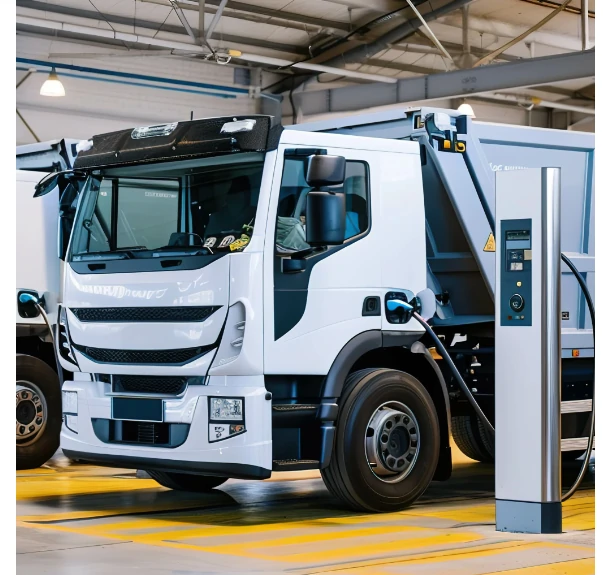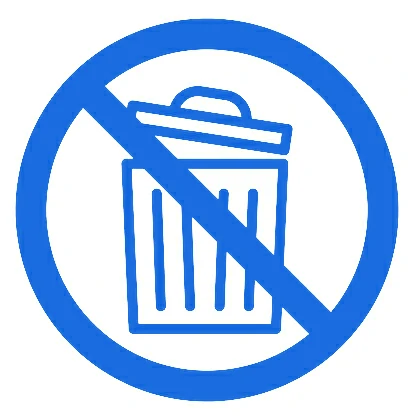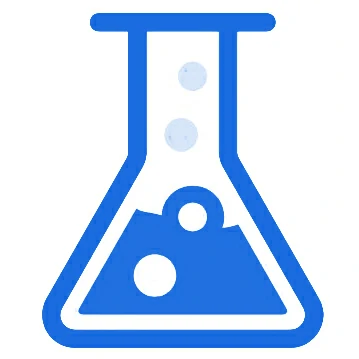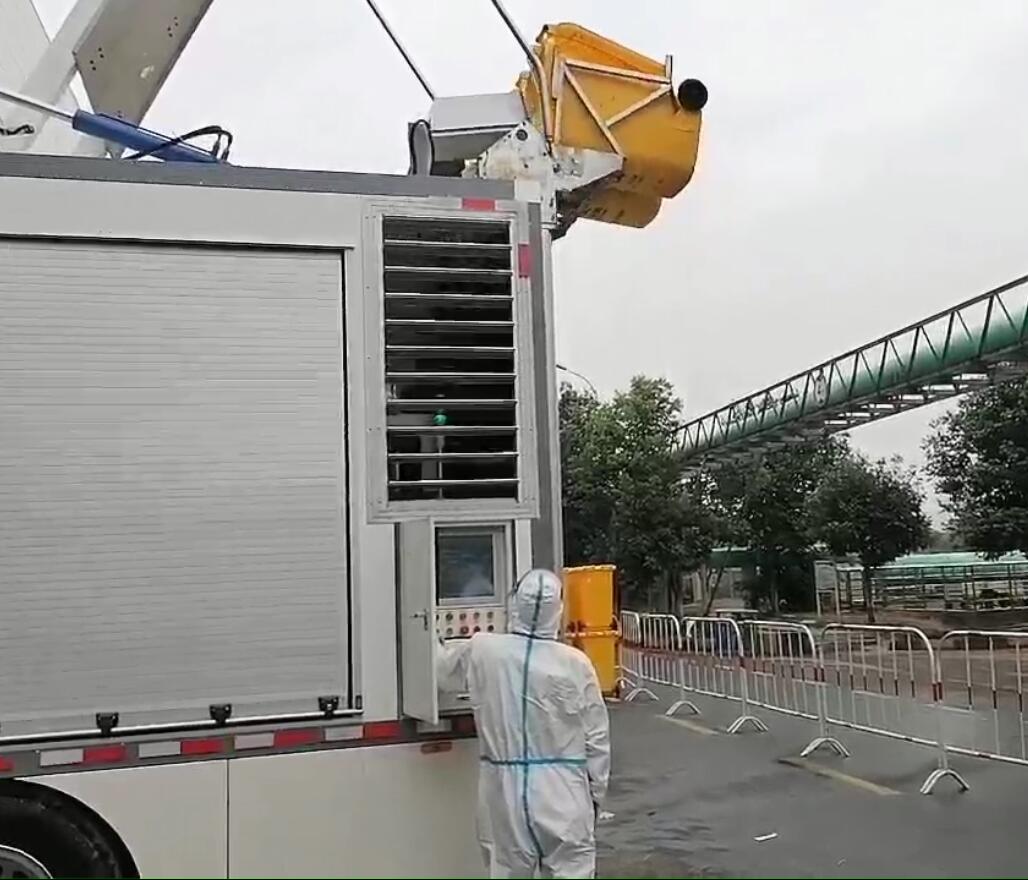Chemical Teatment of Hazardous Waste
Chemical treatment involves using chemical agents to break down hazardous components in medical waste into less harmful or harmless substances. This method plays a crucial role in reducing biohazardousness, volume, and weight of medical waste, ensuring its safe disposal. The main function of chemical degradation agents is to chemically react with specific substances in biological waste, breaking them down into harmless or less harmful substances. For example, certain strong oxidizers can oxidize and decompose organic pollutants in medical or biological waste into carbon dioxide, water, and inorganic salts.

Types of Chemical Treatment for Different Hazardous Wastes
Chlorine-containing Disinfectants
(e.g., Sodium Hypochlorite)
Procedure:
Immerse waste in a 1000-2000mg/L chlorine solution for at least 30 minutes.
Effect:
Oxidizes and decomposes pathogens, including bacteria and viruses, by disrupting their proteins and nucleic acids.
Peroxyacetic Acid
Procedure:
Immerse medical waste in a 0.2%-0.5% peroxyacetic acid solution for 1-2 hours.
Effect:
A potent oxidizing agent that decomposes microorganisms, efficiently killing germs, viruses, and spores.
Formalin Immersion
Procedure:
Immerse tissue specimens in a 10% formalin solution for at least 24 hours.
Effect:
Denatures proteins, preventing tissue decomposition and providing a degree of disinfection.
Glutaraldehyde
Procedure:
Immerse pathological waste in 2% glutaraldehyde for 6-12 hours.
Effect:
Cross-links proteins and nucleic acids, inactivating pathogens and preserving the tissue.
Acid-Base Neutralization
Procedure:
Neutralize acidic waste with alkaline substances (e.g., sodium hydroxide) or alkaline waste with acid (e.g., sulfuric acid).
Effect:
Reduces corrosiveness and toxicity, rendering the waste safer for disposal.
Redox Method
Procedure:
Use oxidizing agents like sodium hypochlorite or chlorine dioxide to treat waste with reducing properties (e.g., cyanide-containing waste).
Effect:
Oxidizes toxic substances into non-toxic byproducts like nitrogen and carbonates.
Requirements for Chemical Treatment Vessels
Matériau
Containers should be corrosion-resistant, such as glass or polytetrafluoroethylene (PTFE) for acidic or alkaline waste, and stainless steel for high-temperature treatments.
Temperature Resistance
Containers should withstand temperatures up to 134°C for sterilization processes.
Sealing
Containers must be tightly sealed to prevent leakage of harmful substances, especially for volatile chemicals like chlorine and peroxyacetic acid.
Étiquetage
Properly label containers with waste type, chemical treatment method, and associated hazard warnings.
Benefits of Chemical Treatment
Protects Operator Safety
Prevents Accidents
Minimizes Environmental Pollution
Standardizes Treatment Process
Procedure for Chemical Treatment

Collection and Labeling
Use specialized, appropriately labeled containers for each type of medical waste (e.g., yellow for infectious waste).

Pre-treatment
Some waste may require pre-treatment (e.g., dewatering liquids) to improve the efficiency of chemical treatment.

Chemical Treatment
Select the appropriate chemical reagents based on waste type.(e.g., chlorine for infectious waste, formalin for pathological waste). Apply the correct concentration and exposure time for optimal disinfection and breakdown.

Protective Gear
Operators must wear safety equipment such as gloves, goggles, and masks to prevent exposure to hazardous substances.

Monitoring and Adjustment
Continuously monitor treatment conditions (e.g., temperature, pressure) and immediately halt the process if any anomalies arise.
Precautions During Use and Operation

Operator Safety
Always adhere to safety procedures when using chemical reagents, especially those that are toxic, corrosive, or irritating (e.g., ethylene oxide or peroxyacetic acid).

Chemical Reagent Management
Store chemicals properly, keeping them in controlled environments to prevent degradation or accidents. Reagents should be handled carefully during transport and use to avoid spillage or overuse.

Maintenance des équipements
Regularly inspect treatment vessels, pipes, seals, and other components for damage. Ensure that operating parameters like temperature, pressure, and flow rate are properly monitored.
Disposal After Chemical Treatment

Monitoring
Test the treated waste to ensure it meets safety standards. Microbiological and chemical tests can confirm the absence of harmful pathogens or excessive chemical residues.

Container Disposal
After use, containers for chemical reagents should be cleaned and properly disposed of. Plastic containers can be recycled if clean, while glass containers should be cleaned or treated as glass waste.

Élimination définitive
Waste that meets safety standards can be disposed of through landfill or incineration. If the standards are not met, re-evaluate and adjust treatment parameters or methods.
Key Considerations for Choosing Chemical Treatment Products
Treatment Effectiveness
Evaluate the efficacy of chemical treatment methods based on the type of medical waste and the required disinfection levels. Check product test reports or performance data.
Sécurité
Choose products with low secondary pollution risks. Ensure that chemical reagents are stable and unlikely to cause dangerous reactions during treatment.
Cost-Effectiveness
Balance the cost of chemical treatments with their effectiveness and safety. Select products that offer good value without compromising on quality.
Compatibility
Ensure that the chemical treatment reagents are compatible with the type of medical waste being processed to achieve the desired breakdown.

Normes et réglementations internationales
Lignes directrices de l'OMS
WHO emphasizes the need for safe, effective, and environmentally friendly methods of medical waste treatment. Chemical treatments should ensure the complete inactivation of pathogens while minimizing environmental impact.
Règlements chinois
La Chine Règlement sur la gestion des déchets médicaux set out strict standards for medical waste treatment facilities, including requirements for chemical treatment, equipment, and operator qualifications.
FAQ
Biosafe offre une gamme complète de produits de haute qualité, soutenue par 16 ans d'expertise industrielle. Nous excellons dans la compréhension des réglementations mondiales, dans la fourniture de solutions sur mesure et dans la prestation d'un service après-vente fiable grâce à notre réseau d'ingénieurs locaux.
Tous nos produits sont soumis à des contrôles de qualité rigoureux et sont certifiés CE, ce qui garantit qu'ils respectent et dépassent les normes réglementaires mondiales. Notre connaissance approfondie des lois internationales nous permet de guider nos clients en matière de conformité, quel que soit l'endroit où ils opèrent.
Oui, Biosafe dispose d'un stock important et propose des livraisons rapides, y compris des services porte-à-porte. Nous comprenons l'urgence de la gestion des déchets médicaux et sommes équipés pour fournir une assistance rapide lorsque vous en avez le plus besoin.
Notre engagement à satisfaire nos clients ne s'arrête pas à la vente. Nous fournissons une assistance permanente par l'intermédiaire de nos ingénieurs locaux, afin de garantir la résolution rapide de tout problème. Nous offrons également des conseils pour aider nos clients à tirer le meilleur parti de nos produits et solutions.
Biosafe possède une vaste expérience dans l'assistance aux clients dans le cadre d'appels d'offres pour des produits médicaux. Nous fournissons des conseils d'experts sur la sélection des produits, la documentation de conformité et des solutions sur mesure pour répondre aux exigences spécifiques de chaque appel d'offres, aidant ainsi nos clients à réussir dans les processus d'appels d'offres concurrentiels.
Envoyer un message
Nous trouver
17th Floor, Caochangmen street, Nanjing City, Jiangsu Province, China
Courriel : [email protected]
Téléphone : +86 13276687134 Téléphone : +44 07516023572
